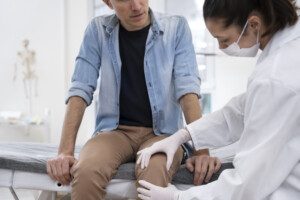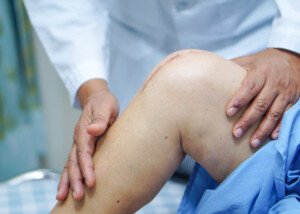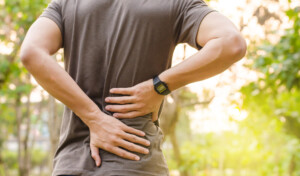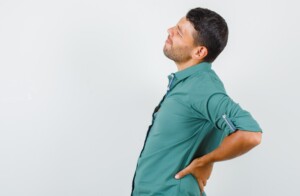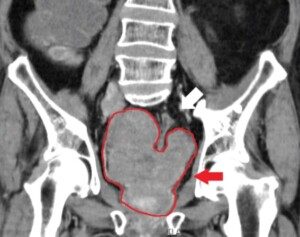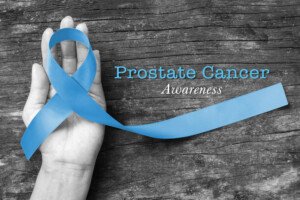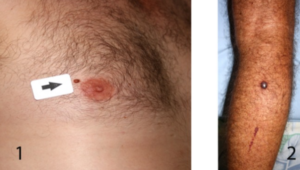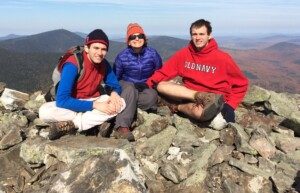How well can the risk of needing a total knee replacement be lowered by working the quadriceps muscles against resistance (weight workouts)?
Intuitively it just seems so obvious that strengthening these four major muscles of the leg can go a long way at preventing osteoarthritis in the knee – a progressive disease that leads to the need for a partial or total knee replacement.
The cartilage in osteoarthritis can wear down so much that eventually, there is bone-on-bone contact in the knee joint because the cushioning layer of cartilage is pretty much gone.
Research presented at the annual meeting of the Radiological Society of North America (RSNA) suggests that having stronger quadriceps muscles, relative to the hamstrings, could lower the risk of needing a total knee replacement.
You might be thinking, “Oh well, if I need a TKR years from now, so be it. If an artificial knee joint works as well as a natural knee joint, what’s the problem?
“I’m not gonna torture myself in the gym when I could just have a bionic knee joint!”
Well, there IS a problem. Several, in fact.
• My father has had three total knee replacement surgeries. This is major surgery that causes a significant risk for blood clots (that can be fatal) in the month following the surgery.
• And the recovery isn’t pretty. You’d better have someone around for at least four weeks post-op to help you with the ordeal.
• My father’s third TKR was a revision because the previous implant “failed.”
• A TKR lasts 15-20 years; it’s not a permanent solution.
• Artificial knee joints aren’t as good as the real thing. For instance, jogging is very much discouraged — indefinitely.
So with all those considerations, it makes a lot of sense to “torture” yourself in the gym with strength training to lessen the chances of ever developing osteoarthritis in your knees.
Leg Muscles and Knee Function
In the U.S., approximately 14 million adults are affected by symptomatic knee osteoarthritis.
Many are expected to eventually require total knee replacement surgery, especially if they get into very old age.
It’s known that stronger muscles are associated with a lower risk of needing a TKR.
But the relative importance of different muscle groups hasn’t been fully established.
The RSNA study specifically looked at the relationship between the quadriceps (front thigh muscles) and the hamstrings (back of thigh), two crucial muscle groups that play important roles in knee function.
The quadriceps are the strongest muscle group in the human body.
These four muscles play a big role in activities like walking, running, jumping, going up and down a staircase and even maintaining posture.
On the other hand, the hamstrings are responsible for extending the hip and flexing the knee.
- Both the quads and hams are vital for physical activity.
- Their balance is important for proper knee joint protection.
The Study
The study’s lead author, Dr. Upasana Upadhyay Bharadwaj, from the University of California, explains that the quads and hams work together as opposing forces.
This allows for a wide range of motion and helping to protect the knee joint.
An imbalance between the two, along with other factors, can alter the biomechanics of the knee and contribute to the progression of osteoarthritis.
To investigate this relationship, Dr. Bharadwaj and colleagues analyzed thigh muscle volume in 134 participants from the Osteoarthritis Initiative, a nationwide study funded by the National Institutes of Health.
The researchers compared 67 people who had undergone a TKR on one knee with 67 control participants who had not needed surgery.
The two groups were matched based on age and gender.
The team collected MRI scans of the participants’ thighs at the time of surgery, as well as images taken two and four years prior to the surgery.
Using advanced deep-learning techniques, the researchers were able to segment and calculate the volume of thigh muscles, a process that would have been very time-consuming if done manually.
Results of the Study
The results revealed that those who had undergone knee replacement surgery had a lower ratio of quadriceps to hamstring volume compared to the control group.
This means that a higher ratio of quadriceps volume relative to hamstring volume was associated with a lower likelihood of needing a TKR.
Additionally, greater volumes of the hamstrings and gracilis muscle (a hip adductor located on the inside of the thigh) were also linked to lower odds of undergoing knee replacement.
What to Work
- Strength train your quads.
- Strength train your hams.
- Include hip adduction exercises to engage the gracilis.
- Quad exercise volume should exceed that for the hamstrings (this isn’t hard to do, as there are so many more ways to engage the quads than the hams with weight training).
Dr. Bharadwaj points out that the relative balance between the two muscle groups might be a more significant factor than the size of the individual muscle groups when it comes to reducing the risk of needing knee surgery.
What if you already have osteoarthritis in a knee?
Dr. Bharadwaj suggests that strength training that focuses on improving balance between the quadriceps and hamstrings could be beneficial for people with knee arthritis.
Strength training could help delay or even avoid the need for surgery.
It would be smart, though, to discuss strength training with your orthopedic or sports medicine doctor before conducting any resistance exercise.
While the research focused on patients with advanced arthritis, the results could also be valuable for the general public.
Proper strength training could potentially help prevent knee issues and osteoarthritis from developing in the first place.
I’m well into middle age and have mighty durable knees (and not by luck, but by working out), while so many middle age people already have knee OA.
According to a study in Arthritis & Rheumatology, about 30% of U.S. adults 45-64 have knee OA, a number that increases with age (Jordan et al., 2021).
The Osteoarthritis Initiative study, which examined knee OA in a large cohort, found that 25% of people 45-64 had some form of knee osteoarthritis, and that the condition is more prevalent among overweight people. But obesity is only one risk factor (albeit a major one).
A study published in The Lancet Rheumatology in 2022 examined the global prevalence of knee OA: By age 55, 10-20% of people in developed countries have knee OA symptoms.
Why is the knee OA rate rising among younger adults?
- Increased rates of obesity; there seems to be no end in sight for this epidemic.
- Higher rate of knee injuries, as participation in high impact sports has risen.
Quad Strengthening Exercises
They are pictured below: squat variations, leg press, leg extension, lunge and incline walking.
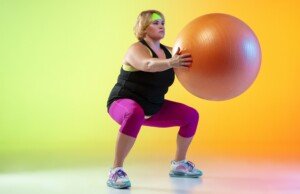
Basic squat. Freepik/master1305
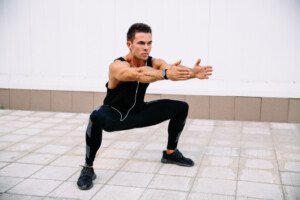
Sumo squat. Freepik/master1305
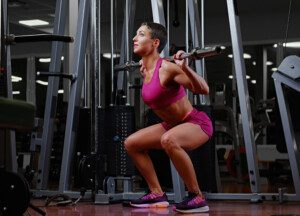
Back squat. Freepik/fxquadro

Dumbbell squat. Freepik/fxquadro
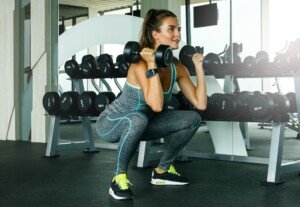
Dumbbell squat. Shutterstock/BLACKDAY
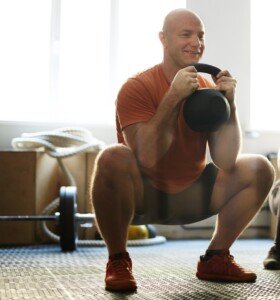
Kettlebell squat. Shutterstock/Pressmaster
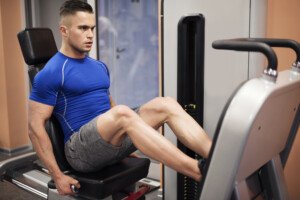
Leg press. Freepik/gpointstudio

Leg extension. Freepik
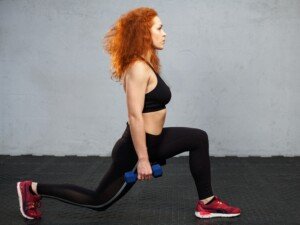
Lunge. With or without hand weights, lunges can be done in repetitions standing in one spot, or, walking from point A to point B. Shutterstock/Artsplav
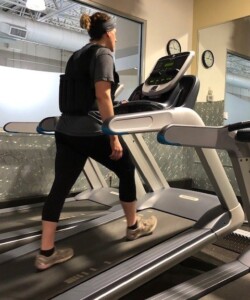
Incline walking. Do not hold onto the treadmill other than for momentary breaks; this cancels out the incline. Adjust the speed so that you don’t need to hold on.
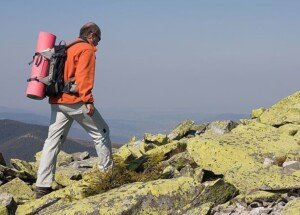
Incline hiking. Kapu
Hamstring Strengthening Exercises

Leg curl. GeorgeStepanek
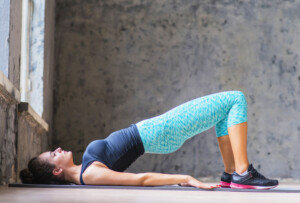
Bridge. Hold the position for 30 seconds; do several sets. Or, thrust your hips by repeatedly lying flat and then bridging; returning to the floor and thrusting up again. Freepik
Tapping into the Gricilis Muscle

Inner thigh or hip adduction machine. This engages the gracilis. In addition, placing your feet very wide, toes pointed out, for a leg press or standing squat will increase recruitment of the gracilis and other hip adductor muscles. Freepik/wavebreakmedia
 Lorra Garrick is a former personal trainer certified by the American Council on Exercise. At Bally Total Fitness, where she was also a group fitness instructor, she trained clients of all ages and abilities for fat loss and maintaining it, muscle and strength building, fitness, and improved cardiovascular and overall health.
Lorra Garrick is a former personal trainer certified by the American Council on Exercise. At Bally Total Fitness, where she was also a group fitness instructor, she trained clients of all ages and abilities for fat loss and maintaining it, muscle and strength building, fitness, and improved cardiovascular and overall health.
.

